Days off–and nights out
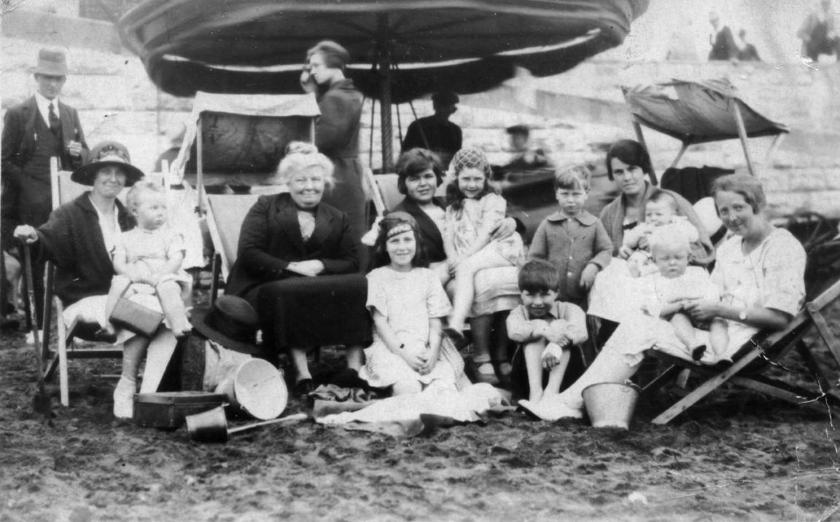
* *** *
From the Churchwardens' accounts 1541-42
3s 4d was paid to a man 'as a reward for bear-baiting,' with 2s paid to players on Epiphany.
Churchwardens' accounts of Ashburton 1479-1580 Alison Hanham, Devon and Cornwall Record Society 1970, p109
* ******* *
'Bull-baiting had been dropped before my time; but I have seen many a badger baiting there...' [He goes on to suggest that he and a Methodist parson in the town have a similar baiting contest, but the statement suggests that actual bull-baiting did once take place]
The Republican Vol 9, 1824, R. Carlile, 84 Fleet Street, p74
'In the alterations recently carried out in the Ashburton Market the workmen found, whilst excavating in the fish market, a block of stone with a massive iron ring securely fixed to it. Old people well remember such a ring existing in the open space between the market and the house where the Capital and Counties Bank now stands. It disappeared in 1850, when the old Market was demolished, and the roadway levelled, and as it now appears, was used in filling in the foundation of the new building, then in course of erection.'
P.F.S.A. (Peter Fabyan Sparke Amery), Devon Notes and Queries, Vol 1, 1901 p26ff
In 1851 the Western Times reported that a gas light, supported by an iron pillar, was to be placed in the centre of the bull ring, 'near where the front of the Old Market stood.'
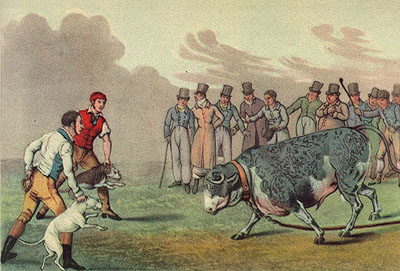
Image from my own collection
*******
Cock fighting
When Mr B B Baker took members of the Devonshire Association to his house in September 1950 he showed them a cock barn where cock fighting once took place. [So far this is the only reference I have]. This house has been identified by his daughter as Sparnham House, 36 West Street.
Western Morning News 25th September 1950 p5 col4
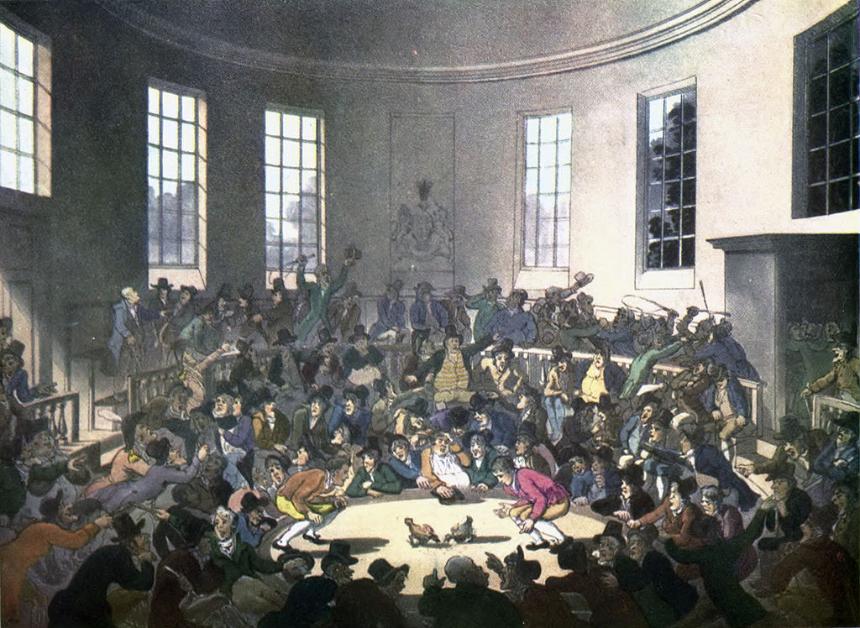
In the public domain.
The case was dismissed.
Western Daily Mercury, 17 June 1874, p2 col6
*******
1840 Mssrs. Gyngells held a firework display in a field at the top of East Street. There were globes, wheels, rockets, snakes and roman candles, which 'drew forth shouts of admiration.' Later Jerome Gyngell gave demonstrations of mechanical experiments etc. at Barron's Golden Lion.
Western Times 11 April 1840 p3 col5
The spectators at Ashburton were lucky. In 1845 Mr. Gyngell walked up a tightrope in Northampton Market Square whilst holding two lighted fireworks. He threw one of the fireworks into the crowd, 'killing Mrs. E. Smith'.
http://www.northampton.gov.uk/info/200242/market-square/1144/history-of-the-northampton-market-square - accessed 24-05-2015
In August of the same year Mr Wells brought his equestrian circus from Astley's Circus, London, to perform in the field adjoining the Gas Works. The crowd were amazed by the tiny Burmese ponies, the smallest only 32 inches high
Western Times 8 August 1840 p3 col5
In 1842 the Masters Grossmith provided entertainment to a large audience at Bates' Golden Lion Assembly Room.
Exeter Flying Post 17 November 1842 p2 col7
The Grossmiths were brothers who had been to Ashburton before in 1834, when the younger one, B. Grossmith, was 7 years old. When they played at the Theatre Royal, Exeter, prices ranged from 6d for children in the gallery, to 2/6d for adults in the first circle.
Western Times 8 November 1834
Mr. Wynne's company, comedians, had been entertaining the townspeople at Foaden's London Inn for a fortnight in 1843.
Western Times 5 August 1843 p5 col3
*******
Womb(w)ell's Menagerie arrived in the town in March, and could be seen in the 'spacious area' at the end of East Street, where the animals and state of the menagerie 'gave general satisfaction'. An elephant and two horses pulled one of the waggons when the menagerie left for Plymouth.
Western Times 29 March 1845 p3 col4
*******
In
the middle of the 19th century the House of Commons had a Dramatic
Committee, and at one stage were considering the optimum size for
theatres. Dowton, a comic actor, 'emphatically' endorsed buildings of a
moderate size. This is presumably the William Dowton below.
The Edinburgh Review July-October 1843 vol 78, Edinburgh 1843, p394
In
1847 Mr Dowton was asked by the Dramatic Committee where he gave his
first public performance. 'In a barn at Ashburton, in Devonshire, or a
cow-house, I believe; it was not so good as a barn.'
Exeter and Plymouth Gazette 3 July 1847 p6 col2
William Dowton, born in
Exeter in 1766*, was articled to an architect at the age of 16. However,
he ran away and joined some strolling players at Ashburton. The Monthly
Mirror said that his first role with the players was as Carlos, in
'Revenge'.
The Georgian Era, vol4, London, 1834, p415
The Monthly Mirror, vol17, London 1804, p291
*Other accounts suggest 1764, and a William Dowton was baptised at St Sidwell, Exeter, in February 1755
https://familysearch.org
Later he spent 36 years at Drury Lane
The Rise of the Victorian Actor, Michael Baker, Routledge, Oxon and New York, 1978, rep 2016, p110 *******
September
1851 Several Ashburton people took the excursion train from Newton
Abbot to London (to visit the Great Exhibition?) Passengers were 'much dissatisfied' by a delay on the South Devon Railway.
Western Times 20 September 1851 p7 col3
*******
1853. The Exeter and Plymouth Gazette speculated that businesses in Ashburton would follow the example of other towns and allow their workers 'a day's recreation' on the day following Christmas Day.
Exeter and Plymouth Gazette 17 December 1853 p4 col2
*******
Western Times 22 April 1872 p3 col2
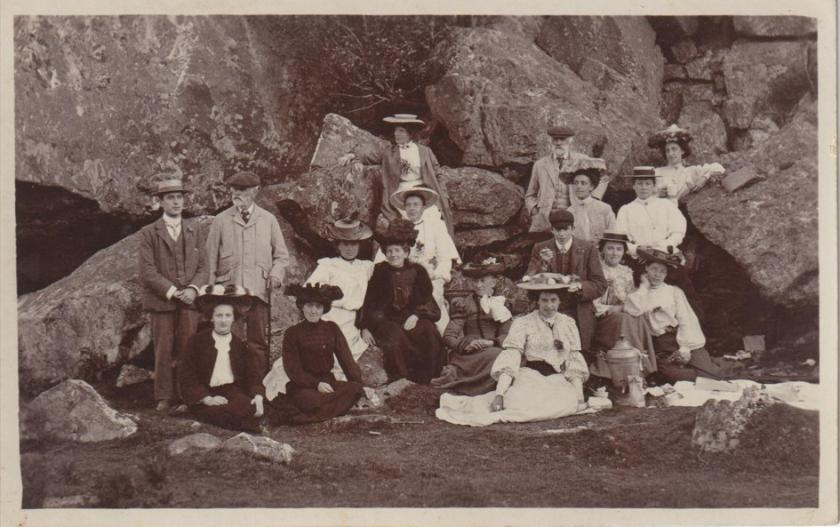
'For some years before the first World War, an excellent concert party known as The Walford Family visited the town each year. They hailed from Wales, and there were some beautiful voices amongst them. I well remember their advance notices which would acclaim, "Come and hear the beautiful HYDRODACTYLOPSICHIC-HARMONICA". This consisted of a number of glasses fixed to a board into which would be poured various amounts of water. A lady would pass her moistened hands over the rims of the glasses and produce the most beautiful music, and at times in harmony.'
From the memories of Reg Andrews, born 1893.
With thanks to Dave Hodge-Brooks and Ernie Smerdon
*******
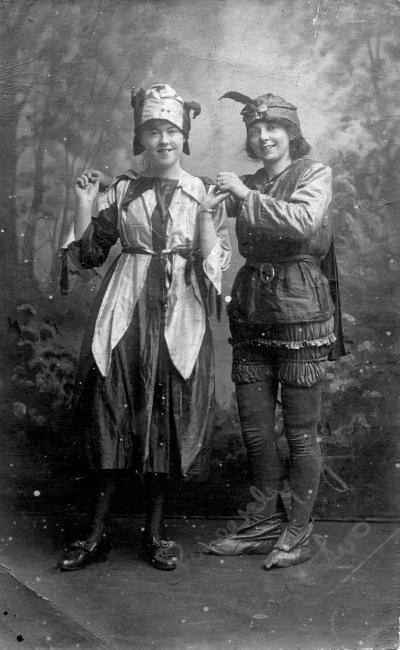
The 1920s
'Life was not very eventful but was enlivened by fêtes in the recreation ground or vicarage gardens, and in the winter concerts in the Town Hall. There was an amateur dramatic society which performed Charley's Aunt and some of J B Priestley's plays. The actors came from the more affluent people in the town: it was a community very much divided by the 'haves' and the 'have-nots'.
Later an amateur operatic society was formed in the town and this opened up a new dimension – Gilbert and Sullivan operas were performed. The music, the singing and the colourful costumes opened up, in a modest way, the world of theatre.
Whist drives were held frequently and in the run-up to Christmas people grew excited at the thought of perhaps winning the goose, which was the star prize. These events were held to raise money for good causes and people contributed with a generosity of spirit to help those who were in greater need.
Saturday nights were alas noisy occasions. When the thirteen pubs in the town closed fights were common events, especially in North Street. A police sergeant and a constable endeavoured to keep order but often men were brought up before the magistrate at the Town Hall the following week, and fined or bound over to keep the peace. Their names appeared in the local paper 'The Guardian' but did little to stop the trouble. Life was hard for labouring men, money scarce, and there was little respite from the daily round: so no wonder once a week they got drunk, and brawls would follow.
Many thanks to Hazel Bray for the above
Western Morning News, 21 July 1927 p1 col3
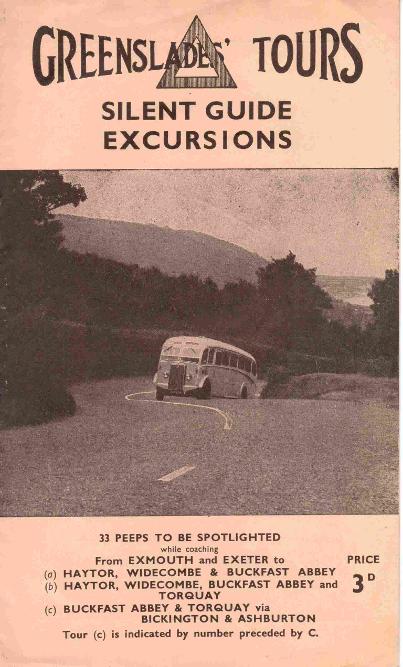
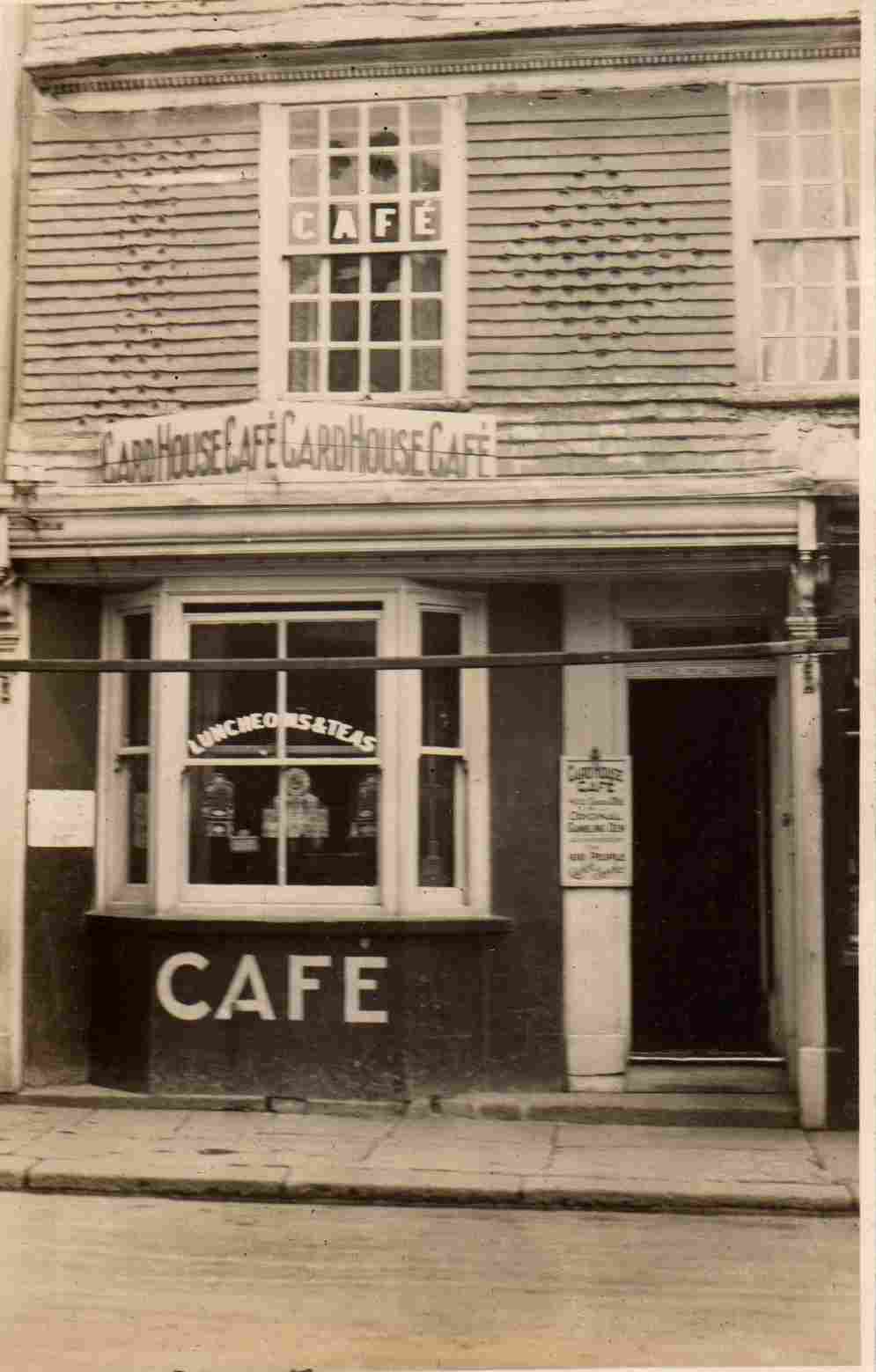
Undated. From my own collection
'We unravel as we travel.......Never before, while travelling, could so many know so much about our country in so short a time.'
A 'Locator' fitted onto Greenslades' coaches, displayed a sequence of numbers. Each number corresponded to a brief description in the booklet of a place on the tour–'It may be found helpful to read about the next place on interest after leaving the previous point.'
14 Ahead C6 says: 'Following the long descent of Hazell Hill, we approach Ashburton, an old market-town (and one of the 'Stannary' towns of the Moorland mines) possessing a fine old Church. The River Yeo is crossed and we enter by North Street. Here, at No. 10, we pass the quaintly-slated house decorated with the 'pips' of a pack of cards, aptly named 'Card House.' Ashburton saw stirring times during the Civil War, and was captured by General Fairfax. Here also is a fine old grammar school with a tower like that of a church.'
From my own collection
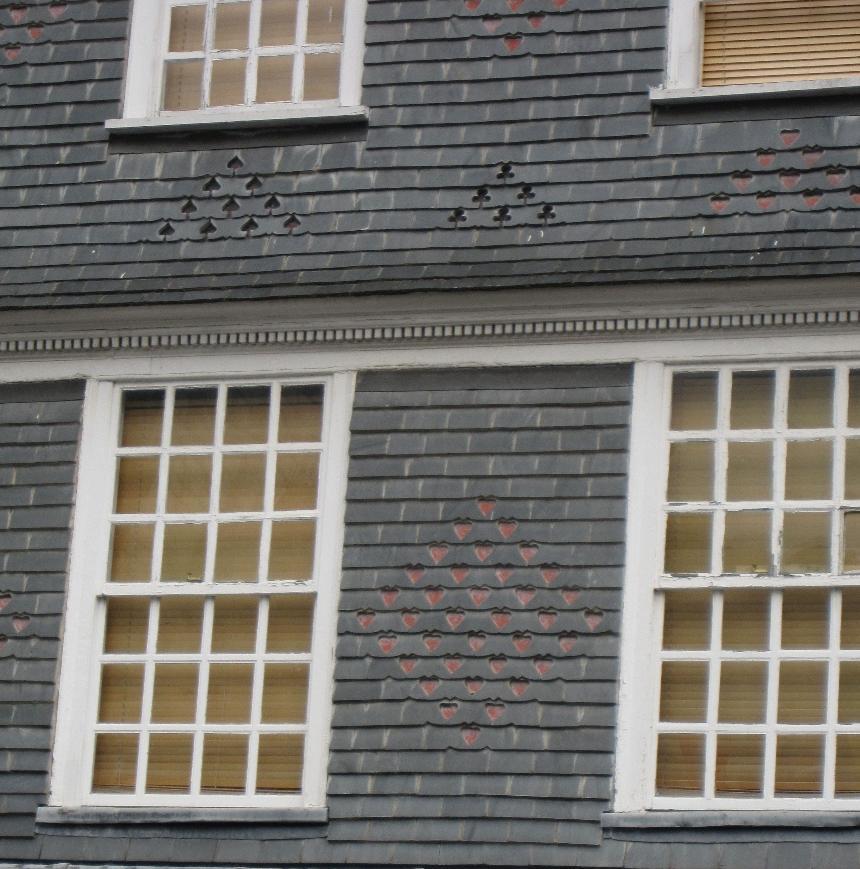
*******
Going to the cinema
In 1919 at the Petty Sessions Mr S E Walford was granted a 12 month license for cinema shows at the Market Hall (now known as The Town Hall).
Western Times 28 February 1919 p9 col4
When The Market Hall was sold at The Globe Hotel, Newton Abbot in 1927, the sale particulars stated 'The Council Hall is at present let as a cinema to Mr. H Burrows at a weekly rental of £2'.
See the 1920s section of the Virtual museum
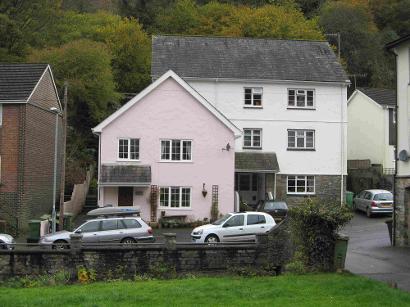
*******
In 1946 Ashburton held a horse show and gymkhana, at Mr Tuckett's Higher Headborough Farm.
There were prizes, including a silver cup, sideshows and refreshments - but owing to bread rationing, there were no teas on the field.
Schedules were available from Mr G B Soper of 42 East Street.
Western Morning News 3 August 1946 p1 col4
Mr J Tuckett was again hosting a gymkhana, horse and pony show at Higher Headborough in July 1950.
Events included a costume race, a lemonade and bun race for children under 16, and a relay race for a cyclist, runner and rider. For 6d contestants could enter a pillow fight.
Teas, refeshments and ices were available at the event; in the evening there was to be a dance at the Golden Lion - admission 3s 6d.
Programme for the gymkhana, sold privately. Not in my possession.
The Studio Theatre
In 1949 the Western Morning News printed an article about the creation of the Studio Theatre by Moyra Babington. For a year it had been the home of the Buckfast Players, a group that had been formed during the war to entertain the troops.
The theatre, which opened in June 1948, had taken 12 months to complete. It was converted from a barn cum carpenter's shop, situated on a road leading from West Street to Moyra's house. Measuring 20 by 55 feet, it was 25 feet high.
Next to the barn, and adjoining the stage, was the garage for the house – a clue to the fact that it was not only used as a garage came from the words on the entrance, 'Stage door'. When there was a performance, the car was moved out, and the garage became dressing rooms, complete with partitions and mirror-covered walls. An old beach hut served as the box office.
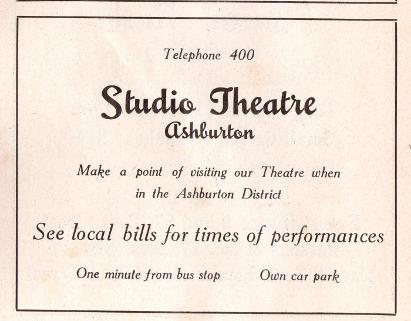
The theatre boasted a lighting panel, and spotlights attached to the beams. At least one spotlight was constructed from an old oven and bull's eye glass from a car headlight. The exit light, which was demanded by regulations, was housed in a box which had been used for transporting poultry – it had been labelled 'Live chicks, with care'.
The green curtains, which were made of hessian, had been dyed piece by piece in a dustbin.
The theatre could seat 110, and 72 of the seats were tip-ups.
Western Morning News 26 October 1949, p2 cols 4-6
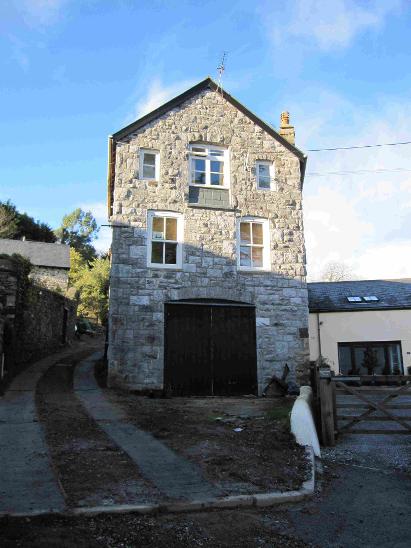
Moyra Babington, full name Eileen Moyra W. Babington, was born in 1913, the daughter of Ernest O. Babington and Audrey (nee Tanner). In addition to teaching, and setting up the Studio Theatre with her husband Arnold Parker, she was also a Westward TV presenter, had a cookery programme, and wrote a book, 'West Country Cooking' in 1971. In latter years she lived at Rothley, West Street, and died in 1980.
Many thanks to Brian Jones, who has a family connection to the Babingtons, for the above information. He would be interested in contacting living relatives - please contact me in the first instance.
Marriage of Ernest O. Babington and Audrey H. Tanner, birth of Eileen M. and marriage to Arnold Parker in 1945 - http://www.freebmd.org.uk/
For more on Ernest O. Babington see the Virtual museum, 1910s section.Left: The old Studio Theatre. Originally a thatched barn, it was constructed with two foot thick walls, and enormous beams that had been cut by hand.
My own photograph 2013A story from the 1980s, if true, suggests that theatre going became less popular in Ashburton with the passing of the decades.
Allegedly The Plymouth Theatre Company toured the area with a production of The Golden Pathway Annual. It was quite an undertaking: six actors took on twenty parts, and the scenery took 10 hours to erect. Free tickets were offered, and posters were put up in a publicity campaign. The venue seated 200, but only one man arrived to watch the performance. This was an improvement on a previous performance of The Winslow Boy, where nobody had turned up at all.
The Mammoth Book of Losers, Karl Shaw, Constable and Robinson Ltd., 2014, under 'Least Successful Opening.'
The Pleasures and Treasures of Britain, A Discerning Traveller's Companion, Daivd Kemp, Toronto and Oxford, 1992, p48